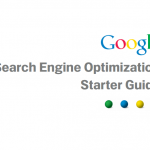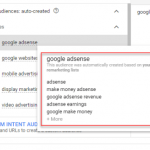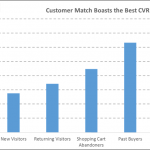Google’s Surojit Chatterjee: right here’s Why You must belief AdWords Estimated store Visits
Head of cell search promoting offers more details on what goes into measuring estimated store visits in AdWords.

With mobile ingrained in our daily habits, applied sciences that may tie digital promotion to in-store visits and sales are at last changing into a reality. in terms of retailer visits reporting, though, advertisers need to have faith that the data is correct and actually holds meaning.
earlier this month, when Xad launched its in-store visits technology, Blueprints, Google reached out to advertising Land to offer more element on how their own in-store visits metric works in AdWords. On Monday, for the first time, Google’s director of product management for cellular search advertising and AdSense, Surojit Chatterjee, shared more explicit details about how Google determines if any person has actually visited a store reasonably than merely walked neighborhood.
Google started reporting on estimated in-retailer visits in December, 2014 to indicate advertisers how ad clicks assist pressure foot traffic to their shops. on the time of the launch, Google merely said that this estimated information used to be in keeping with user proximity to the advertiser’s location on Google Maps, captured when vicinity history is activated on their telephones. turns out it’s no longer rather that straightforward.
working out what goes into the metric might help assuage advertisers hesitant to depend on “estimated” information.
talking at HeroConf in Portland, Oregon, Chatterjee explained the indicators that go into estimated store visits embody:
- Google Earth and Google Maps boulevard View knowledge
- Mapping of the coordinates and borders of lots of of hundreds of thousands of outlets globally
- Wi-Fi-strength signal in stores. With permission of the retailers themselves, Google teams go in and measure the store’s Wi-Fi sign power inside that place
- GPS place alerts
- Google query knowledge
- visit habits
- Panel of over 1 million opted-in customers provide their on-ground area history validate data accuracy and inform the modeling
asked why advertisers will have to belief information that is presented as estimates, Chatterjee, pointed to the breadth of signals and quantity of information that get taken into consideration in the sampling. “we are extraordinarily accurate once we exhibit the data,” he introduced, “This isn’t a user survey.” It’s also why many advertisers don’t get this information at all, but — Google doesn’t have sufficient of it to provide statistically valid outcomes.
when I caught up with Chatterjee after his speak, he likened in-store visits measurement to what the corporate has been doing with products like Google Now, a provider that may decipher spoken words regardless of a person’s age or accent. He explained, Google is good at gathering enormous quantities of information and using laptop studying to automate the process of figuring out alerts (grasping a word whether it was spoken with the aid of a 4 yr-old and a 60 12 months-outdated in Google Now) and predicting outcomes (estimating whether an ad click generated a store talk over with). “We’re superb at this kind of factor.” says Chatterjee, and an important consider being good is the wealth of information Google indexes. We don’t need to just recognize the borders of an advertiser’s retailer, he says, we need to map all the retailers surrounding that retailer to get precision.
The person panel information is used to inform the algorithm and examine that retailer visits actually took place. Chatterjee says, If we predict a consumer visited a retailer, and the consumer panel knowledge displays that a visit happened, then we all know we’re excellent. If we predict a person visited a retailer, however the consumer panel knowledge presentations there wasn’t a visit, we feed that again into the version and vice versa. Google’s version also does no longer automatically depend a consumer getting into a store as a discuss with, however considers behavior patterns and queries to bear in mind intent and whether the consult with was perhaps knowledgeable via an ad click on.
Google has additionally been working with agencies and bigger shoppers on monitoring in-store gross sales again to advert clicks in AdWords. He cited information from specific, working with digital company RKG, that confirmed the retailer saw a ninety eight % increase in ROAS on model key phrases and a 174 percent raise on non-model keywords when taking a look at store transaction data.
Google partners with the most important third-celebration store transaction analytics companies to pull information for advertisers. Google strengthen teams then work with advertisers to feed that again into AdWords, matching the sales data to ad clicks to show paid search attribution down to the keyword stage. Chatterjee says many outlets are actually the use of retailer transactions and retailer-visits information in conjunction to tell campaign and bidding methods.
Chatterjee hinted that the long-term plan is to combine and automate retailer transactions measurement into AdWords, but that’s a methods off. store visits knowledge, in the meantime, is available to a larger set of outlets. With the entire signals and ongoing computing device finding out that go into it, Chatterjee stresses, advertisers that have estimated retailer visits leads to their debts should think about the info.
(Some images used underneath license from Shutterstock.com.)
advertising Land – internet advertising news, methods & guidelines
(187)















